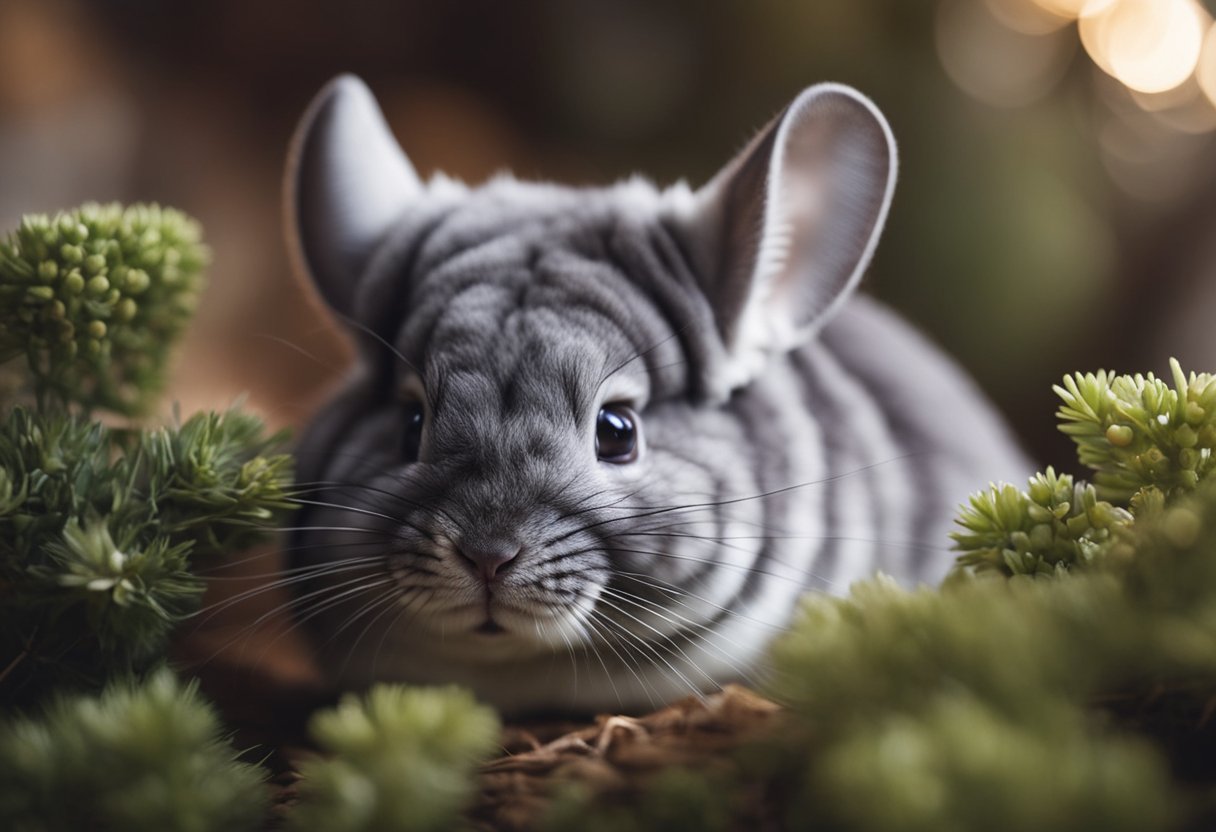Do Chinchillas Like to Be Held? Understanding Their Social Behavior and Comfort Levels
Many new chinchilla owners wonder about their pets’ comfort with being held. Chinchillas generally do not like being held due to their natural instincts as prey animals. Understanding their behavior is essential for creating a safe and trusting environment.

With patience and the right techniques, some chinchillas can learn to tolerate or even enjoy gentle handling. It’s important to respect their boundaries and ensure that any interactions are positive. By following best practices for socializing and handling, you can help your chinchilla feel more secure.
Key Takeaways
- Chinchillas prefer to stay grounded rather than being held.
- Positive interactions are key to building trust with your chinchilla.
- Always observe your chinchilla’s body language to ensure their comfort.
Understanding Chinchilla Behavior

Chinchillas have unique social habits and behaviors that affect how they interact with humans. Knowing these behaviors can help you create a more trusting environment for your pet.
Social Dynamics and Human Interaction
Chinchillas are social animals that live in groups in the wild. They have complex social dynamics, which means they can be cautious around humans. It’s important to approach your chinchilla gently and patiently.
To help build trust, spend time near your chinchilla’s cage without trying to hold it. You can also offer treats to encourage positive interactions. Remember that every chinchilla has its own personality, influencing its comfort level with being held. Some may enjoy it, while others prefer to remain independent.
Signs of Affection and Discomfort
You can learn a lot about your chinchilla by watching its behavior. Signs of affection include coming close to you, nudging, or licking your hand. These behaviors show that your chinchilla feels safe and trusts you.
On the other hand, discomfort might be shown through behaviors like twitching, squirming, or vocalizing. If your chinchilla tries to escape or hides, it may not be ready for handling. Respect these signals and give your chinchilla space when needed. By monitoring these signs, you can improve your bond with your pet while ensuring its comfort.
Best Practices for Holding Chinchillas

When holding chinchillas, it’s essential to approach them with care and create a trusting environment. These practices will help make the experience more comfortable for both you and your pet.
Approaching and Handling Techniques
Start by allowing your chinchilla to see and sniff you. Approach slowly to avoid startling it. You can sit near its cage and talk softly. This way, your chinchilla can get used to your presence.
When you’re ready to pick it up, gently scoop your chinchilla from underneath. Use both hands to support its body. Do not grab its tail, as this can cause pain.
Limit the handling time at first. Most chinchillas prefer short sessions. Gradually increase this time as they become more comfortable. Always pay attention to their body language. Signs of stress include jumping, vocalizing, or trying to escape.
Creating a Trusting Environment
Trust takes time, so be patient with your chinchilla. Spend time with it outside of handling, such as talking or giving treats. This helps to build a positive relationship.
Consistency is key. Handle your chinchilla regularly to help it feel secure. Always handle it in a quiet space to minimize loud noises.
Use treats as a reward when it allows you to hold it. This reinforces good behavior associated with being held.
Respect its boundaries. If your chinchilla seems frightened or tries to escape, give it space. Creating a stress-free environment goes a long way in fostering trust.
Resources

If you want to learn more about chinchillas and their behavior, there are several helpful resources available. Here are some useful links:
- For tips on how to help your chinchilla get more comfortable with being held, check out Do Chinchillas Like To Be Held?.
- To understand the best practices for safely holding your chinchilla, visit How To Hold A Chinchilla.
- For a step-by-step guide with images, refer to How to Hold a Chinchilla: 8 Steps.
- If you’re interested in understanding their preferences, read Do Chinchillas Like To Be Held? The Complete Guide.
- For more information on building trust with your chinchilla, see Do Chinchillas Like to be Held? (And How to Make it Happen).
These resources provide advice on handling chinchillas gently and building a positive relationship with them. Don’t forget to observe your chinchilla’s body language to ensure they feel safe and comfortable.
Frequently Asked Questions

When it comes to caring for chinchillas, many owners have specific questions. You might want to know how to hold them, if they prefer company, or how to recognize their feelings. Here are answers to some common inquiries.
How should you hold a chinchilla for it to be comfortable?
To hold a chinchilla comfortably, support its body properly. Use one hand to hold the base of its tail and the other hand under its chest. This method provides balance and security.
Is it common for chinchillas to seek companionship in pairs?
Yes, chinchillas are social animals and often do well in pairs. Having a companion can reduce their stress and make them more confident in their environment.
Can handling chinchillas boost their bond with their owners?
Yes, regular and gentle handling can strengthen the bond between you and your chinchilla. It helps them feel safe and builds trust over time.
What signs indicate that a chinchilla is showing affection to its owner?
Chinchillas may show affection through actions like licking or chirping softly. They might also relax in your presence, indicating they feel comfortable.
Does the need for attention vary among chinchillas?
Yes, each chinchilla has its own personality. Some may seek more attention and interaction, while others prefer to be left alone at times.
What activities do chinchillas enjoy for play and stimulation?
Chinchillas enjoy climbing, running in exercise wheels, and exploring tunnels. Providing toys and safe chew items can keep them mentally and physically engaged.

